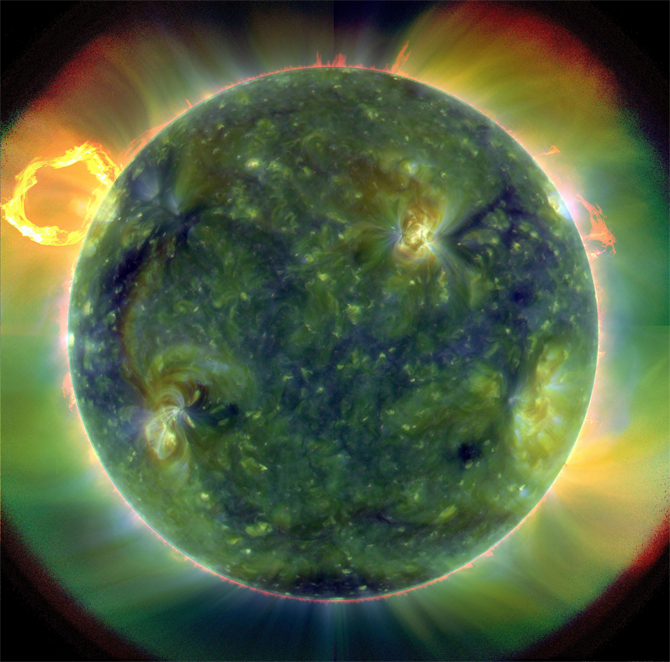Solar done right
Posted on | April 7, 2011 | 2 Comments
 Should our conversion to solar energy be done on urban rooftops, brownfield sites and marginal agricultural land, or should it be carried out via a rushed give-away of public lands staged by the Bureau of Land Management? This report by Solar Done Right, a group formed by the watchdog non-profit Western Lands Project and a collection of concerned conservationists, would rather see solar on, say, untenable land in the Westlands Water District rather than pristine desert. If you trust Interior to get it right without supervision, it merits remembering that the last time the curtain was drawn on the department’s oversight of big energy, our civil servants were snorting coke, watching porn and having sex with the company reps. I wish I were making that last part up. Alas, no.
Should our conversion to solar energy be done on urban rooftops, brownfield sites and marginal agricultural land, or should it be carried out via a rushed give-away of public lands staged by the Bureau of Land Management? This report by Solar Done Right, a group formed by the watchdog non-profit Western Lands Project and a collection of concerned conservationists, would rather see solar on, say, untenable land in the Westlands Water District rather than pristine desert. If you trust Interior to get it right without supervision, it merits remembering that the last time the curtain was drawn on the department’s oversight of big energy, our civil servants were snorting coke, watching porn and having sex with the company reps. I wish I were making that last part up. Alas, no.
This lovely image of the sun comes from NASA.
Comments
2 Responses to “Solar done right”
Leave a Reply



April 7th, 2011 @ 2:01 pm
Interestingly, NPR recently reported that there was a profitable growth industry in rooftop solar when it came to commercial and industrial buildings. The solar panels were both owned and operated by a vendor who contracted with the facility on which they were located to purchase power.
What this tells me is that huge installations in the desert aren’t required to leverage economies of scale and make solar profitable now. However, large desert installations may be required to maintain profit margins at power companies.
April 7th, 2011 @ 2:26 pm
http://badmomgoodmom.blogspot.com/2009/04/whod-thunk.html
Some commercial enterprises–burned by power outages in the past, when their registers were unable to work–have added solar panels. See the picture of Costco SD in the link.
I personally think that photovoltaic (PV) is oversold and solar thermal (hot water) is undersold. But, in SoCal, we experience brownouts during hot weather quite often. PV makes sense for disaster preparation and continuity of operations. PV certainly doesn’t make cost-effective sense yet.
Desert solar electric generation doesn’t make sense from a power transmission point of view. But, add in the difference in solar radiation density between moister coastal subarbs and the desert, and it looks more attractive.
I’m interested in how the solar-thermal projects with salt in the desert plays out. They will be able to bank up heat power for electricity generation even when the sun isn’t shining. That is too heavy for rooftops and needs more space.
We could take projects on a case by case basis, ruled by rational analysis. Imagine that!